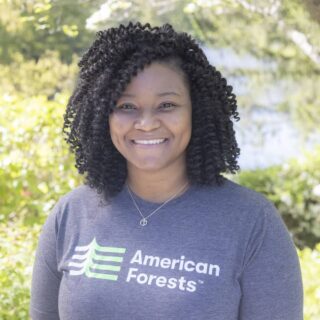Trees in cities provide health, employment and climate resiliency benefits that everyone should have. They help fulfill our basic needs, such as breathing fresh air and drinking clean water. Trees also cool neighborhoods, which reduces heat-related illnesses and utility costs, and generate wealth by creating tree-related career opportunities. Much like buildings, streets and sewer lines, trees are critical infrastructure that improve our quality of life. This is why Tree Equity is one of American Forests’ primary focuses.

Photo Credit: Evan Frost / American Forests
But a map of tree cover in America’s cities is too often a map of income and race. That’s because, due to decades of redlining and other discriminatory policies, trees are often sparse in neighborhoods with more low-income families and people of color. Studies show that the neighborhoods that were redlined have fewer trees, preventing the people living there from reaping the benefits trees provide.
American Forests has been leading the Tree Equity movement through our local and policy efforts. We worked to help secure billions of dollars for this work in the Inflation Reduction Act. Since 2023, American Forests has signed major new agreements to help implement those funds in partnership with agencies across the federal government. This includes our $50 million Tree Equity Catalyst Initiative and Fund, which will help remove barriers for organizations and municipalities who can move the needle for Tree Equity on the ground by providing critical learning opportunities, technical assistance and funding..
We are shifting from movement building to mobilization. All of American Forests’ skills and capacities can assist these federal efforts, from multi-partner facilitation and community engagement to forest science, project management and workforce development. We need to plant and grow 500 million trees across urbanized America, according to our 2021 Tree Equity Score. Simply put, this is about ensuring there are enough trees in every part of every city.
To achieve Tree Equity, we strive to achieve these three goals by 2030:















